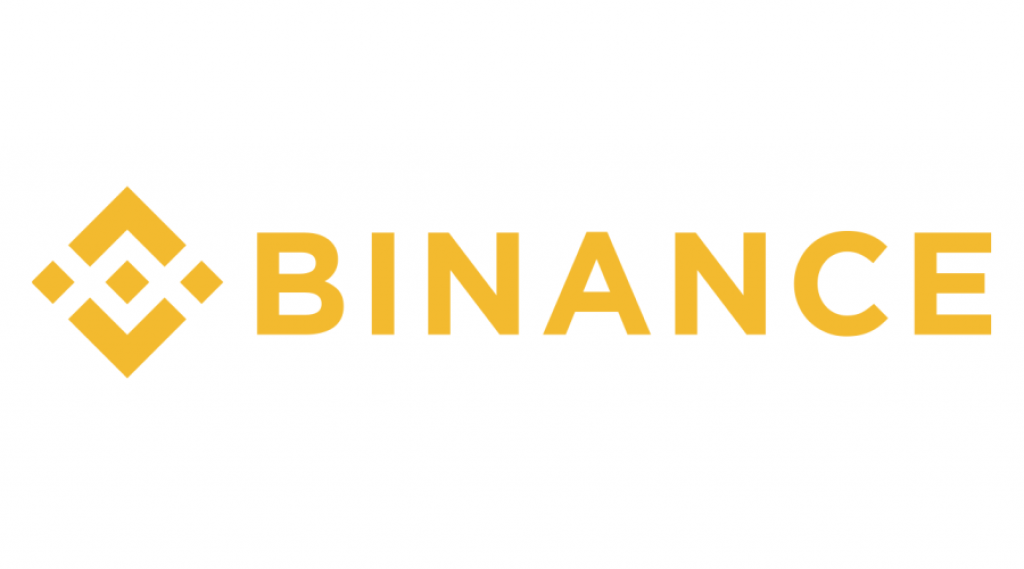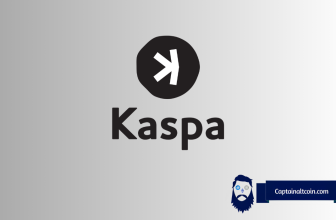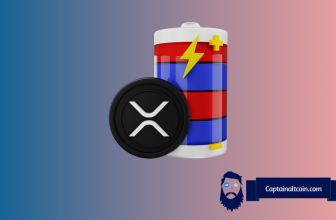
Since the recent Gamestop saga, “Short Selling” has entered the popular imagination. Once understood only by financial professionals, it seems everyone is getting in on the act. The goal is simple – to profit when the value of an asset falls. The method is also quite simple – borrow some of the asset, sell it at market price, and rebuy for less once it has fallen in value. Hand it back to the lender and pocket the difference.
Some of the major exchanges will facilitate this type of action on Ethereum. Day traders with an appetite for increased risk are especially fond of the leveraged short trade, but there are some pitfalls you need to know about before you start down this path. Using margin, if you are not careful, is the quickest way to get REKT.
What you'll learn 👉
Shorting ETH Using Margin on Exchanges
Your exchange will charge you a deposit to facilitate the loan of an asset. The size of the deposit will determine your level of margin, or “leverage,” and this will multiply the quantity of the asset under your control. For example, if you pay a 20% deposit, you will borrow 5 times the value of your deposit, but will be expected to cover the same quantity to close out the trade.
It’s fantastic on the one hand, but brutal on the other. Any gains you make are magnified 5 fold, but naturally, any losses you suffer are equally severe. There’s a good reason why they made movies called both “The Big Short” and “M argin Call.” Here is how to short crypto on Binance.
How to short Ethereum on Binance Margin Trading

One option to short ETH on Binance is through the Binance Margin Trading platform:
- Open a Binance account, if you haven’t already.
- Deposit funds (directly ETH or some other currency and then exchange it for ETH)
- Transfer the funds from the spot wallet to Margin wallet
- Go to the ETH/stablecoin market pair, such as ETH/USDT or ETH/BUSD.
- After transferring ETH coins to your Margin Wallet, you will be able to use those coins as collateral to borrow funds. Your Margin Wallet balance determines the amount of funds you can borrow, following a fixed rate of 5:1 (5x).
- You will now be able to trade the borrowed funds while having a debt plus the interest rate. The interest rate is updated every 1 hour.
- Choose the ETH pair, put in the amount you wish to short and click on margin sell ETH.
How to short Ethereum on Binance Futures
You could also short Ethereum and altcoins on Binance Futures:
- Go to Binance Futures.
- Select between perpetual or quarterly futures contracts.
- Make sure you understand how the platform works by reading the Binance Futures guide.
- Select the ETH pair and adjust your leverage (up to 20x)
- Open the contract
Taking a Short by Going Long Elsewhere

Before the general public had access to options and derivatives trading, the only way to benefit from an anticipated price drop was to hold something else, usually cash, and buy your target asset cheaper later on. At the moment “going long elsewhere” is still a useful approach to crypto trading as volatility is high and there is less need for leverage.
It works like this. If your intention is to stack Sats, you might look at ETH and decide that it’s historically weak against BTC. You would buy ETH with your BTC and wait for it to climb against BTC. Then you would buy back a greater quantity of BTC. Job done – Sats stacked.
The process is relatively risk free as neither of these assets are going to zero, a very real hazard for your bankroll on a leveraged trade. The risk is that you don’t make the gains you would have by not making the trade. This still hurts, of course, but it will not wipe you out.
Losing more than your deposit
Should your trade go against you, the amount needed to cover your losses will rapidly increase. Once this reaches the value of your balance on the exchange, you will have 2 choices. Either cut and run, losing your entire bankroll, or import more funds to continue the trade. This is known as a margin call and is every option trader’s worst nightmare.
The analogy is holding onto a helium balloon that keeps rising. Do you hold on forever, hoping it will land eventually? Or do you let go? The smart play is never to get dangerously high off the ground.
Unlimited Downside
Here’s the wealth warning. As long-time crypto lovers know, there is unlimited upside if you hold the right coins. This same upside costs you money when shorting, so you are exposed to the corresponding unlimited downside.
For instance, if the spot price of your shorted ETH rises by $10, and you are leveraged at 5 to 1, the value of your trade will fall by $50 for every ETH you control. For every further $10 increase in the ETH price, you will pay another $50. This will never stop until you close out the trade, or all the money in your account is swallowed up in a margin call.
If you get it very wrong and the price of ETH shoots up from its current price of around $1600 to an all time high of say $2600, you will be on the hook for 5 x $1000 = $5,000. Until you close out the trade, you will keep on losing at five times the rate of the spot price rise. The rewards of the leveraged short can be massive, but the losses can be equally devastating.
Read also:
- How To Send Ethereum From A Ledger Nano S
- How to Buy Ethereum in 2021 | Buy ETH With Credit Card, Cash or Wire
- Where to spend Ethereum
- Best Ethereum Wallets
- How to stake Ethereum
The Bottom Line
Short trades are not intrinsically any more hazardous than long trades. It’s the leverage that supercharges the risk. They might make sense for typical equities on the Dow or Nasdaq which rarely fluctuate by more than a percent or two over a few days. For crypto currencies that can move double figure percentages in minutes, leveraged shorts make sense only for the boldest of risk profiles.
I know options day traders that lost thousands by going to the bathroom, but made thousands more while brewing a coffee. If you make this kind of leveraged play, your
bankroll management is critical. You need to pay close attention to any live trade and set stop losses if you decide to sleep on it. Remember, the crypto markets never sleep.
FAQs
Can I short ETH with leverage?
Yes, you can, depending on the exchange. Binance and Kraken offer leveraged shorts for ETH. If you are outside the U.S., there’s Poloniex and Bitfinex.
Does Ethereum short selling require ID?
It depends where you make the trade, but generally for higher leverage, yes. As with all compliant exchanges and brokers, KYC regulations are in force. Most reputable exchanges require the account holder to take a test to show they have a basic grasp of leveraged trades.
How to Short Ethereum on a CFD Trading Platform: The Advantages
Many brokers offer CFD (Contract For Difference) derivative trading . This allows you to trade the price of an asset without holding the actual asset. The broker is generally on the other side of the trade and makes its money on the spread. Leverage is available, generally at a rate of 5 to 1. Shop around for the tightest spreads.
Can you short on Coinbase pro?
Not any more. It was withdrawn in November 2020 following a recommendation from Commodity Futures Trading Commission.
Can I short on Binance?
Yes you can. After taking a short competency test you can start leveraging your trades and short selling. As mentioned, there are several pairs available for ETH.
Why short selling is bad
The ‘short’ answer is that leverage introduces more risk to a trade, but risk can be managed and this is not inherently a bad strategy. The deeper problem is that shorting can have real world consequences.
The problem with the predatory short is that it’s in the shorter’s interest that the target asset fails. There are well known cases of money managers making short trades then talking down a stock price on TV, only to make out like bandits.
The tactic is to destroy the share price of a company, which will potentially harm it’s fundamentals. Real companies and real jobs have been decimated in this way. The worst abuses happen when people short more of an asset than actually exists. This is easily done because once an asset has been borrowed and sold on as part of a short play, it can just as easily be borrowed again from the new owner for yet another trade.
Although SEC regulations forbid this, the rules are almost never enforced as it’s almost impossible to monitor. If only there was some kind of immutable ledger that could track the status of a share or coin… hmmm…suggestions on a postcard, please.
Allegedly, 140% of Gamestop stock was shorted, and this is why the shorters had such a large potential downside – there could never be enough shares in existence to settle their contracts, so their scarcity and price would continue to increase, crippling the short sellers. Once people realised this, they started buying. This is known as a short squeeze.
Think about it this way. Would you be comfortable if people started taking out fire insurance on your house, then playing with matches and gasoline in the back garden?
And in what other facet of life are we allowed to sell things that either we don’t own, or don’t exist at all?
There are lots of arguments against aggressive shorting, but for most of us it’s not the short selling that’s bad, it’s the way people go about it that can be questionable. Hopefully, this is just one one of the many iniquities of our financial system that blockchain and DeFi will make more transparent.








